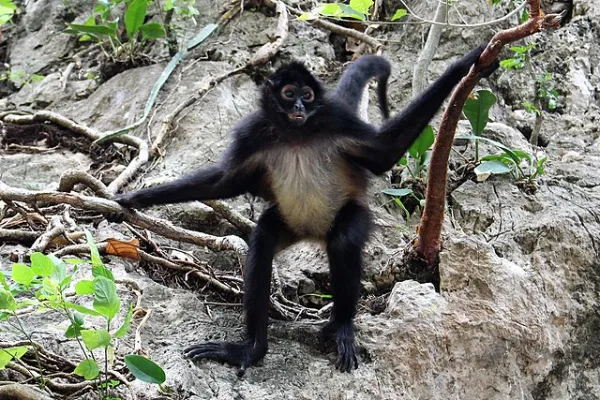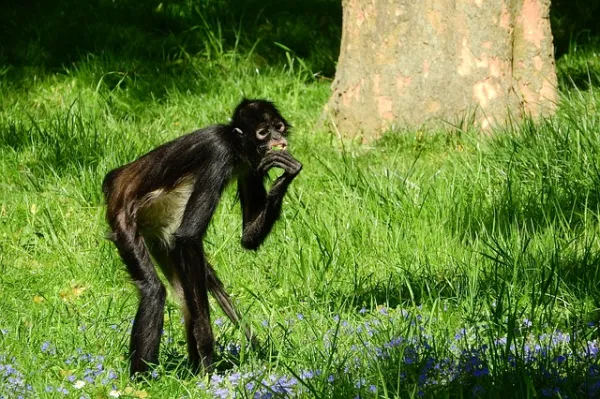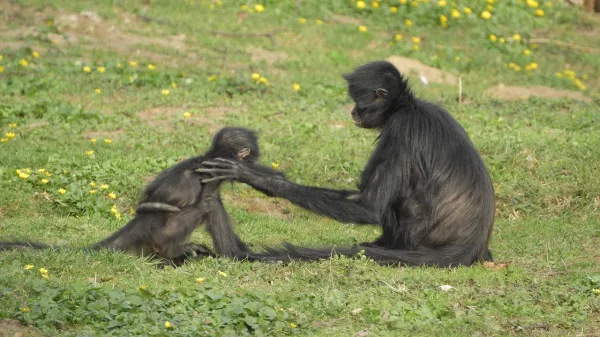The spider monkey (Ateles geoffroyi) is a highly agile and intelligent primate native to the tropical forests of Central America and northern South America. Known for their long limbs and prehensile tails, these arboreal animals are essential for maintaining forest biodiversity. However, their populations are now under serious threat due to habitat destruction, human exploitation, and climate change.
In this article, we’ll explore the current conservation status of the spider monkey, the main reasons behind their decline, and the actions we can take to prevent their extinction.

Yes. According to the International Union for Conservation of Nature (IUCN), the spider monkey is currently listed as an endangered species. Although they were once widely distributed across the region, deforestation and habitat fragmentation have severely reduced their natural range.
In some countries like El Salvador, spider monkeys are now only found within well-managed protected areas, such as the Normandía Reserve in Usulután. This highlights the crucial role that protected natural reserves play in conserving the species.
Spider monkeys are strictly arboreal, living in a variety of tropical and subtropical forests—rainforests, dry forests, evergreen forests, and deciduous forests. However, their presence is not evenly distributed, as it largely depends on the availability of food and seasonal climate changes.
Despite their adaptability to different habitats, spider monkeys are extremely sensitive to human disturbances. Activities like logging, farming, and urban development lead to habitat loss, degradation, and fragmentation—factors that significantly reduce their numbers in the wild.

Here are the main threats pushing spider monkeys toward extinction:
The biggest threat is large-scale deforestation for cattle ranching, agriculture, and logging. This leads to the fragmentation of their habitat, isolating populations and limiting access to food and mates.
Spider monkeys are hunted for meat, captured as exotic pets, and even used in traditional medicine or sold as tourist souvenirs. These activities drastically reduce their wild populations.
Fires, often caused by land clearing or climate-related droughts, further damage their already shrinking habitats and disrupt ecological balance.
Rising global temperatures and increased El Niño events are altering rainfall patterns and fruiting cycles, negatively impacting the food supply of spider monkeys. This has been linked to noticeable declines in primate populations in affected areas.

Spider monkeys are important seed dispersers, playing a key role in forest regeneration. Protecting them also means protecting entire ecosystems. Here’s how we can contribute:
More protected reserves must be created in key regions where spider monkeys live. These areas should be effectively managed and regularly monitored.
Active reforestation and habitat restoration projects help expand the monkeys' living space and reconnect fragmented forests.
Stricter laws and enforcement against illegal wildlife trade can help curb the capture and sale of spider monkeys.
Community education programs can foster local support for conservation efforts. Teaching the importance of biodiversity can lead to long-term cultural shifts.
25 Endangered Animals in Mexico
22 Endangered Animals in Venezuela
20 Endangered Species in Peru
16 Endangered Animals in Colombia
Spider monkeys face a combination of threats that are both environmental and human-driven. Their decline is not just a loss for wildlife lovers—it also signals deeper issues in forest ecosystems. With concerted conservation efforts, we can still reverse the trend and ensure these intelligent primates continue swinging through the trees for generations to come.
To explore more articles like this one, check out our Endangered Animals category. In our next feature, we’ll dive into the fascinating world of another critically threatened species in tropical rainforests.
animal tags: endangered spider monkeys
We created this article in conjunction with AI technology, then made sure it was fact-checked and edited by a Animals Top editor.